Patient Monitoring
Diagnostics
Wearable Devices
Therapeutics
Temperature Sensors
Pressure Sensors
Glucose Sensors
Heart Rate Sensors
Hospitals
Home Care Settings
Diagnostic Laboratories
Research Institutions
Electrochemical Sensors
Optical Sensors
Thermal Sensors
Biosensors
North America
Europe
South America
Asia Pacific
Middle East and Africa
North America Outlook (USD Billion, 2019-2035)
North America Disposable Medical Sensors Market by Application Type
Patient Monitoring
Diagnostics
Wearable Devices
Therapeutics
North America Disposable Medical Sensors Market by Sensor Type
Temperature Sensors
Pressure Sensors
Glucose Sensors
Heart Rate Sensors
North America Disposable Medical Sensors Market by End User Type
Hospitals
Home Care Settings
Diagnostic Laboratories
Research Institutions
North America Disposable Medical Sensors Market by Technology Type
Electrochemical Sensors
Optical Sensors
Thermal Sensors
Biosensors
North America Disposable Medical Sensors Market by Regional Type
US
Canada
US Outlook (USD Billion, 2019-2035)
US Disposable Medical Sensors Market by Application Type
Patient Monitoring
Diagnostics
Wearable Devices
Therapeutics
US Disposable Medical Sensors Market by Sensor Type
Temperature Sensors
Pressure Sensors
Glucose Sensors
Heart Rate Sensors
US Disposable Medical Sensors Market by End User Type
Hospitals
Home Care Settings
Diagnostic Laboratories
Research Institutions
US Disposable Medical Sensors Market by Technology Type
Electrochemical Sensors
Optical Sensors
Thermal Sensors
Biosensors
CANADA Outlook (USD Billion, 2019-2035)
CANADA Disposable Medical Sensors Market by Application Type
Patient Monitoring
Diagnostics
Wearable Devices
Therapeutics
CANADA Disposable Medical Sensors Market by Sensor Type
Temperature Sensors
Pressure Sensors
Glucose Sensors
Heart Rate Sensors
CANADA Disposable Medical Sensors Market by End User Type
Hospitals
Home Care Settings
Diagnostic Laboratories
Research Institutions
CANADA Disposable Medical Sensors Market by Technology Type
Electrochemical Sensors
Optical Sensors
Thermal Sensors
Biosensors
Europe Outlook (USD Billion, 2019-2035)
Europe Disposable Medical Sensors Market by Application Type
Patient Monitoring
Diagnostics
Wearable Devices
Therapeutics
Europe Disposable Medical Sensors Market by Sensor Type
Temperature Sensors
Pressure Sensors
Glucose Sensors
Heart Rate Sensors
Europe Disposable Medical Sensors Market by End User Type
Hospitals
Home Care Settings
Diagnostic Laboratories
Research Institutions
Europe Disposable Medical Sensors Market by Technology Type
Electrochemical Sensors
Optical Sensors
Thermal Sensors
Biosensors
Europe Disposable Medical Sensors Market by Regional Type
Germany
UK
France
Russia
Italy
Spain
Rest of Europe
GERMANY Outlook (USD Billion, 2019-2035)
GERMANY Disposable Medical Sensors Market by Application Type
Patient Monitoring
Diagnostics
Wearable Devices
Therapeutics
GERMANY Disposable Medical Sensors Market by Sensor Type
Temperature Sensors
Pressure Sensors
Glucose Sensors
Heart Rate Sensors
GERMANY Disposable Medical Sensors Market by End User Type
Hospitals
Home Care Settings
Diagnostic Laboratories
Research Institutions
GERMANY Disposable Medical Sensors Market by Technology Type
Electrochemical Sensors
Optical Sensors
Thermal Sensors
Biosensors
UK Outlook (USD Billion, 2019-2035)
UK Disposable Medical Sensors Market by Application Type
Patient Monitoring
Diagnostics
Wearable Devices
Therapeutics
UK Disposable Medical Sensors Market by Sensor Type
Temperature Sensors
Pressure Sensors
Glucose Sensors
Heart Rate Sensors
UK Disposable Medical Sensors Market by End User Type
Hospitals
Home Care Settings
Diagnostic Laboratories
Research Institutions
UK Disposable Medical Sensors Market by Technology Type
Electrochemical Sensors
Optical Sensors
Thermal Sensors
Biosensors
FRANCE Outlook (USD Billion, 2019-2035)
FRANCE Disposable Medical Sensors Market by Application Type
Patient Monitoring
Diagnostics
Wearable Devices
Therapeutics
FRANCE Disposable Medical Sensors Market by Sensor Type
Temperature Sensors
Pressure Sensors
Glucose Sensors
Heart Rate Sensors
FRANCE Disposable Medical Sensors Market by End User Type
Hospitals
Home Care Settings
Diagnostic Laboratories
Research Institutions
FRANCE Disposable Medical Sensors Market by Technology Type
Electrochemical Sensors
Optical Sensors
Thermal Sensors
Biosensors
RUSSIA Outlook (USD Billion, 2019-2035)
RUSSIA Disposable Medical Sensors Market by Application Type
Patient Monitoring
Diagnostics
Wearable Devices
Therapeutics
RUSSIA Disposable Medical Sensors Market by Sensor Type
Temperature Sensors
Pressure Sensors
Glucose Sensors
Heart Rate Sensors
RUSSIA Disposable Medical Sensors Market by End User Type
Hospitals
Home Care Settings
Diagnostic Laboratories
Research Institutions
RUSSIA Disposable Medical Sensors Market by Technology Type
Electrochemical Sensors
Optical Sensors
Thermal Sensors
Biosensors
ITALY Outlook (USD Billion, 2019-2035)
ITALY Disposable Medical Sensors Market by Application Type
Patient Monitoring
Diagnostics
Wearable Devices
Therapeutics
ITALY Disposable Medical Sensors Market by Sensor Type
Temperature Sensors
Pressure Sensors
Glucose Sensors
Heart Rate Sensors
ITALY Disposable Medical Sensors Market by End User Type
Hospitals
Home Care Settings
Diagnostic Laboratories
Research Institutions
ITALY Disposable Medical Sensors Market by Technology Type
Electrochemical Sensors
Optical Sensors
Thermal Sensors
Biosensors
SPAIN Outlook (USD Billion, 2019-2035)
SPAIN Disposable Medical Sensors Market by Application Type
Patient Monitoring
Diagnostics
Wearable Devices
Therapeutics
SPAIN Disposable Medical Sensors Market by Sensor Type
Temperature Sensors
Pressure Sensors
Glucose Sensors
Heart Rate Sensors
SPAIN Disposable Medical Sensors Market by End User Type
Hospitals
Home Care Settings
Diagnostic Laboratories
Research Institutions
SPAIN Disposable Medical Sensors Market by Technology Type
Electrochemical Sensors
Optical Sensors
Thermal Sensors
Biosensors
REST OF EUROPE Outlook (USD Billion, 2019-2035)
REST OF EUROPE Disposable Medical Sensors Market by Application Type
Patient Monitoring
Diagnostics
Wearable Devices
Therapeutics
REST OF EUROPE Disposable Medical Sensors Market by Sensor Type
Temperature Sensors
Pressure Sensors
Glucose Sensors
Heart Rate Sensors
REST OF EUROPE Disposable Medical Sensors Market by End User Type
Hospitals
Home Care Settings
Diagnostic Laboratories
Research Institutions
REST OF EUROPE Disposable Medical Sensors Market by Technology Type
Electrochemical Sensors
Optical Sensors
Thermal Sensors
Biosensors
APAC Outlook (USD Billion, 2019-2035)
APAC Disposable Medical Sensors Market by Application Type
Patient Monitoring
Diagnostics
Wearable Devices
Therapeutics
APAC Disposable Medical Sensors Market by Sensor Type
Temperature Sensors
Pressure Sensors
Glucose Sensors
Heart Rate Sensors
APAC Disposable Medical Sensors Market by End User Type
Hospitals
Home Care Settings
Diagnostic Laboratories
Research Institutions
APAC Disposable Medical Sensors Market by Technology Type
Electrochemical Sensors
Optical Sensors
Thermal Sensors
Biosensors
APAC Disposable Medical Sensors Market by Regional Type
China
India
Japan
South Korea
Malaysia
Thailand
Indonesia
Rest of APAC
CHINA Outlook (USD Billion, 2019-2035)
CHINA Disposable Medical Sensors Market by Application Type
Patient Monitoring
Diagnostics
Wearable Devices
Therapeutics
CHINA Disposable Medical Sensors Market by Sensor Type
Temperature Sensors
Pressure Sensors
Glucose Sensors
Heart Rate Sensors
CHINA Disposable Medical Sensors Market by End User Type
Hospitals
Home Care Settings
Diagnostic Laboratories
Research Institutions
CHINA Disposable Medical Sensors Market by Technology Type
Electrochemical Sensors
Optical Sensors
Thermal Sensors
Biosensors
INDIA Outlook (USD Billion, 2019-2035)
INDIA Disposable Medical Sensors Market by Application Type
Patient Monitoring
Diagnostics
Wearable Devices
Therapeutics
INDIA Disposable Medical Sensors Market by Sensor Type
Temperature Sensors
Pressure Sensors
Glucose Sensors
Heart Rate Sensors
INDIA Disposable Medical Sensors Market by End User Type
Hospitals
Home Care Settings
Diagnostic Laboratories
Research Institutions
INDIA Disposable Medical Sensors Market by Technology Type
Electrochemical Sensors
Optical Sensors
Thermal Sensors
Biosensors
JAPAN Outlook (USD Billion, 2019-2035)
JAPAN Disposable Medical Sensors Market by Application Type
Patient Monitoring
Diagnostics
Wearable Devices
Therapeutics
JAPAN Disposable Medical Sensors Market by Sensor Type
Temperature Sensors
Pressure Sensors
Glucose Sensors
Heart Rate Sensors
JAPAN Disposable Medical Sensors Market by End User Type
Hospitals
Home Care Settings
Diagnostic Laboratories
Research Institutions
JAPAN Disposable Medical Sensors Market by Technology Type
Electrochemical Sensors
Optical Sensors
Thermal Sensors
Biosensors
SOUTH KOREA Outlook (USD Billion, 2019-2035)
SOUTH KOREA Disposable Medical Sensors Market by Application Type
Patient Monitoring
Diagnostics
Wearable Devices
Therapeutics
SOUTH KOREA Disposable Medical Sensors Market by Sensor Type
Temperature Sensors
Pressure Sensors
Glucose Sensors
Heart Rate Sensors
SOUTH KOREA Disposable Medical Sensors Market by End User Type
Hospitals
Home Care Settings
Diagnostic Laboratories
Research Institutions
SOUTH KOREA Disposable Medical Sensors Market by Technology Type
Electrochemical Sensors
Optical Sensors
Thermal Sensors
Biosensors
MALAYSIA Outlook (USD Billion, 2019-2035)
MALAYSIA Disposable Medical Sensors Market by Application Type
Patient Monitoring
Diagnostics
Wearable Devices
Therapeutics
MALAYSIA Disposable Medical Sensors Market by Sensor Type
Temperature Sensors
Pressure Sensors
Glucose Sensors
Heart Rate Sensors
MALAYSIA Disposable Medical Sensors Market by End User Type
Hospitals
Home Care Settings
Diagnostic Laboratories
Research Institutions
MALAYSIA Disposable Medical Sensors Market by Technology Type
Electrochemical Sensors
Optical Sensors
Thermal Sensors
Biosensors
THAILAND Outlook (USD Billion, 2019-2035)
THAILAND Disposable Medical Sensors Market by Application Type
Patient Monitoring
Diagnostics
Wearable Devices
Therapeutics
THAILAND Disposable Medical Sensors Market by Sensor Type
Temperature Sensors
Pressure Sensors
Glucose Sensors
Heart Rate Sensors
THAILAND Disposable Medical Sensors Market by End User Type
Hospitals
Home Care Settings
Diagnostic Laboratories
Research Institutions
THAILAND Disposable Medical Sensors Market by Technology Type
Electrochemical Sensors
Optical Sensors
Thermal Sensors
Biosensors
INDONESIA Outlook (USD Billion, 2019-2035)
INDONESIA Disposable Medical Sensors Market by Application Type
Patient Monitoring
Diagnostics
Wearable Devices
Therapeutics
INDONESIA Disposable Medical Sensors Market by Sensor Type
Temperature Sensors
Pressure Sensors
Glucose Sensors
Heart Rate Sensors
INDONESIA Disposable Medical Sensors Market by End User Type
Hospitals
Home Care Settings
Diagnostic Laboratories
Research Institutions
INDONESIA Disposable Medical Sensors Market by Technology Type
Electrochemical Sensors
Optical Sensors
Thermal Sensors
Biosensors
REST OF APAC Outlook (USD Billion, 2019-2035)
REST OF APAC Disposable Medical Sensors Market by Application Type
Patient Monitoring
Diagnostics
Wearable Devices
Therapeutics
REST OF APAC Disposable Medical Sensors Market by Sensor Type
Temperature Sensors
Pressure Sensors
Glucose Sensors
Heart Rate Sensors
REST OF APAC Disposable Medical Sensors Market by End User Type
Hospitals
Home Care Settings
Diagnostic Laboratories
Research Institutions
REST OF APAC Disposable Medical Sensors Market by Technology Type
Electrochemical Sensors
Optical Sensors
Thermal Sensors
Biosensors
South America Outlook (USD Billion, 2019-2035)
South America Disposable Medical Sensors Market by Application Type
Patient Monitoring
Diagnostics
Wearable Devices
Therapeutics
South America Disposable Medical Sensors Market by Sensor Type
Temperature Sensors
Pressure Sensors
Glucose Sensors
Heart Rate Sensors
South America Disposable Medical Sensors Market by End User Type
Hospitals
Home Care Settings
Diagnostic Laboratories
Research Institutions
South America Disposable Medical Sensors Market by Technology Type
Electrochemical Sensors
Optical Sensors
Thermal Sensors
Biosensors
South America Disposable Medical Sensors Market by Regional Type
Brazil
Mexico
Argentina
Rest of South America
BRAZIL Outlook (USD Billion, 2019-2035)
BRAZIL Disposable Medical Sensors Market by Application Type
Patient Monitoring
Diagnostics
Wearable Devices
Therapeutics
BRAZIL Disposable Medical Sensors Market by Sensor Type
Temperature Sensors
Pressure Sensors
Glucose Sensors
Heart Rate Sensors
BRAZIL Disposable Medical Sensors Market by End User Type
Hospitals
Home Care Settings
Diagnostic Laboratories
Research Institutions
BRAZIL Disposable Medical Sensors Market by Technology Type
Electrochemical Sensors
Optical Sensors
Thermal Sensors
Biosensors
MEXICO Outlook (USD Billion, 2019-2035)
MEXICO Disposable Medical Sensors Market by Application Type
Patient Monitoring
Diagnostics
Wearable Devices
Therapeutics
MEXICO Disposable Medical Sensors Market by Sensor Type
Temperature Sensors
Pressure Sensors
Glucose Sensors
Heart Rate Sensors
MEXICO Disposable Medical Sensors Market by End User Type
Hospitals
Home Care Settings
Diagnostic Laboratories
Research Institutions
MEXICO Disposable Medical Sensors Market by Technology Type
Electrochemical Sensors
Optical Sensors
Thermal Sensors
Biosensors
ARGENTINA Outlook (USD Billion, 2019-2035)
ARGENTINA Disposable Medical Sensors Market by Application Type
Patient Monitoring
Diagnostics
Wearable Devices
Therapeutics
ARGENTINA Disposable Medical Sensors Market by Sensor Type
Temperature Sensors
Pressure Sensors
Glucose Sensors
Heart Rate Sensors
ARGENTINA Disposable Medical Sensors Market by End User Type
Hospitals
Home Care Settings
Diagnostic Laboratories
Research Institutions
ARGENTINA Disposable Medical Sensors Market by Technology Type
Electrochemical Sensors
Optical Sensors
Thermal Sensors
Biosensors
REST OF SOUTH AMERICA Outlook (USD Billion, 2019-2035)
REST OF SOUTH AMERICA Disposable Medical Sensors Market by Application Type
Patient Monitoring
Diagnostics
Wearable Devices
Therapeutics
REST OF SOUTH AMERICA Disposable Medical Sensors Market by Sensor Type
Temperature Sensors
Pressure Sensors
Glucose Sensors
Heart Rate Sensors
REST OF SOUTH AMERICA Disposable Medical Sensors Market by End User Type
Hospitals
Home Care Settings
Diagnostic Laboratories
Research Institutions
REST OF SOUTH AMERICA Disposable Medical Sensors Market by Technology Type
Electrochemical Sensors
Optical Sensors
Thermal Sensors
Biosensors
MEA Outlook (USD Billion, 2019-2035)
MEA Disposable Medical Sensors Market by Application Type
Patient Monitoring
Diagnostics
Wearable Devices
Therapeutics
MEA Disposable Medical Sensors Market by Sensor Type
Temperature Sensors
Pressure Sensors
Glucose Sensors
Heart Rate Sensors
MEA Disposable Medical Sensors Market by End User Type
Hospitals
Home Care Settings
Diagnostic Laboratories
Research Institutions
MEA Disposable Medical Sensors Market by Technology Type
Electrochemical Sensors
Optical Sensors
Thermal Sensors
Biosensors
MEA Disposable Medical Sensors Market by Regional Type
GCC Countries
South Africa
Rest of MEA
GCC COUNTRIES Outlook (USD Billion, 2019-2035)
GCC COUNTRIES Disposable Medical Sensors Market by Application Type
Patient Monitoring
Diagnostics
Wearable Devices
Therapeutics
GCC COUNTRIES Disposable Medical Sensors Market by Sensor Type
Temperature Sensors
Pressure Sensors
Glucose Sensors
Heart Rate Sensors
GCC COUNTRIES Disposable Medical Sensors Market by End User Type
Hospitals
Home Care Settings
Diagnostic Laboratories
Research Institutions
GCC COUNTRIES Disposable Medical Sensors Market by Technology Type
Electrochemical Sensors
Optical Sensors
Thermal Sensors
Biosensors
SOUTH AFRICA Outlook (USD Billion, 2019-2035)
SOUTH AFRICA Disposable Medical Sensors Market by Application Type
Patient Monitoring
Diagnostics
Wearable Devices
Therapeutics
SOUTH AFRICA Disposable Medical Sensors Market by Sensor Type
Temperature Sensors
Pressure Sensors
Glucose Sensors
Heart Rate Sensors
SOUTH AFRICA Disposable Medical Sensors Market by End User Type
Hospitals
Home Care Settings
Diagnostic Laboratories
Research Institutions
SOUTH AFRICA Disposable Medical Sensors Market by Technology Type
Electrochemical Sensors
Optical Sensors
Thermal Sensors
Biosensors
REST OF MEA Outlook (USD Billion, 2019-2035)
REST OF MEA Disposable Medical Sensors Market by Application Type
Patient Monitoring
Diagnostics
Wearable Devices
Therapeutics
REST OF MEA Disposable Medical Sensors Market by Sensor Type
Temperature Sensors
Pressure Sensors
Glucose Sensors
Heart Rate Sensors
REST OF MEA Disposable Medical Sensors Market by End User Type
Hospitals
Home Care Settings
Diagnostic Laboratories
Research Institutions
REST OF MEA Disposable Medical Sensors Market by Technology Type
Electrochemical Sensors
Optical Sensors
Thermal Sensors
Biosensors

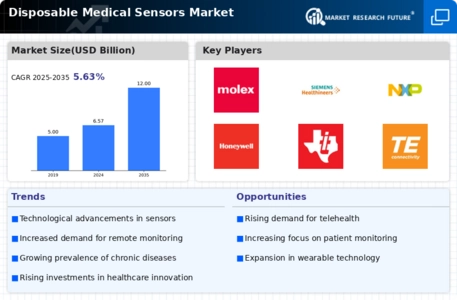
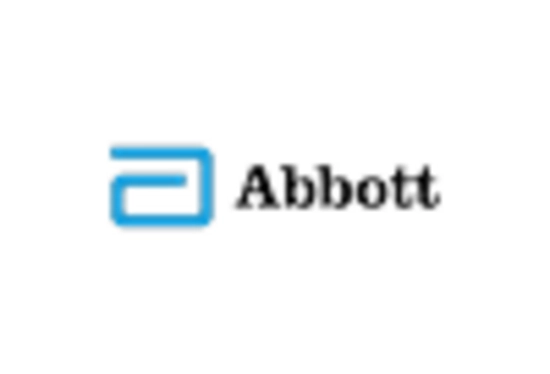
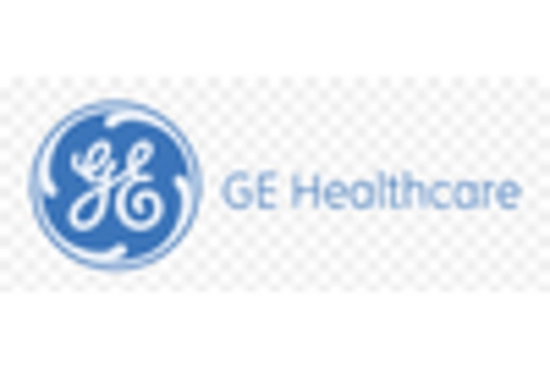


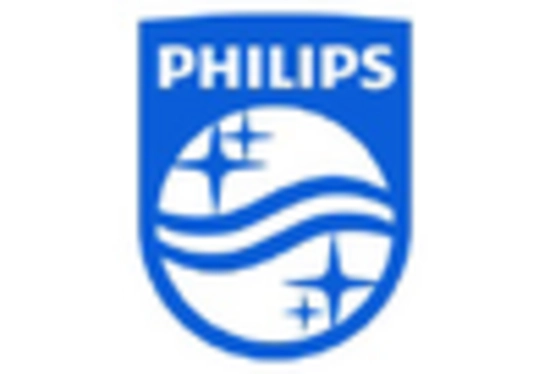
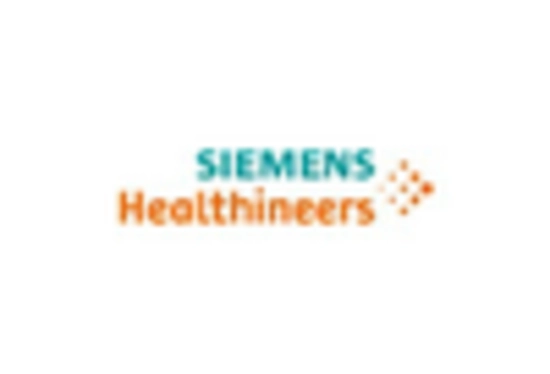









Leave a Comment